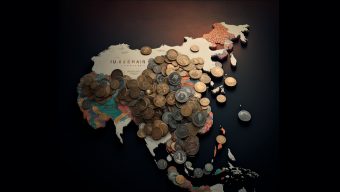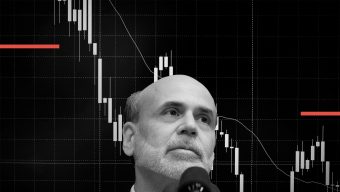We live in a world where the so-called “emerging countries” are increasingly visible, while at the same time they acquire absolute and relative importance in many economic aspects.
Although we are much accustomed to hearing about them, we may not be aware that they have appeared relatively recently on the global scene. Indeed, it’s something that has acquired traction only in the second half of the last century. And with the exception of the “Asian tigers”, it began in the 1980s, when China opened up to the rest of the world (although some people would say that the process began a few years earlier, with the death of Mao).
In many other parts of the world this emergence came in the 90s. In Central and Eastern Europe after the collapse of the Berlin Wall and the collapse of the Soviet Union; in India with some reforms in 1991 that accelerated in the middle of that decade; or in Latin America, with the end of the “debt crisis” and the acceptance of the Washington Consensus as an alternative to the Import Substitution model that was so common to the region and to other parts of the world since the Great Depression.
This road has not been followed in the same way in every region and country, and of course there are economies that moved more or less rapidly.
The pace of globalization
Naturally this road was not followed in the same way in every region and country, and of course there were economies that moved more or less rapidly and/or were more or less successful in this process of opening up to the rest of the world –which to a large degree included the lowering of tariffs and greater processes of commercial integration.
And this has been one of the principal characteristics of what we have come to call “globalization”. And while globalization has not been exclusive to the emerging nations, their participation in it has been very important, and has made a difference with regard to earlier periods of growth and economic change. For the first time in almost two centuries, since the start of the Industrial Revolution, the whole world has experienced a period of convergence in which the per capita incomes of many countries have risen and now approach those in the industrialized countries, which until that point had monopolized global well-being, with the exception of some small minorities in the rest of the world.
As a result, in recent decades we have seen how, year after year, the distance between the high-income countries and the other ones has diminished, and while it also came about in per capita incomes it occurred even more quickly in terms of total GDP.
If 20 years ago the 10 largest economies in the world included eight high-income countries in North America and Europe along with Japan and China –the only one from among the emerging countries– the latest data by the World Bank (corresponding to the end of 2013) shows that there are already four emerging economies among the world’s top 10: China in second place; Brazil in seventh; Russia in eight, and India, making its first appearance on this list, in tenth.
When measured in purchasing power parity (the other way of measuring GDPs with adjustments for price differences), there are now five emerging countries among the world’s 10 largest: China is in second place and hard on the heels of the United States (in fact preliminary data for 2014 indicates that it is already the largest economy in the world by this measure), India is in third place, Russia in sixth, and Brazil in seventh. In tenth place is Indonesia, a country that is often forgotten but that is destined to play a very important role, if only because it is the world’s fourth largest country by population.
These statistics give us an idea of how the world has changed in these past three or four decades, and this underlying tendency has not only been an important characteristic of our time but will be even more decisive in explaining our future.
But within this overall trend there have been different periods. The “Great Recession” accelerated this tendency. With the crisis concentrated in the United States, Europe and Japan, the difference between the rhythms of growth in these countries and in the emerging ones increased, and that is why for some years now organizations like the International Monetary Fund have spoken of a recovery “at two speeds” –much faster in the emerging countries and much slower or negligible in high-income countries. During this period most of the global economic growth has been in the emerging economies.
It’s as if the pendulum were moving to the other extreme, and from excessive optimism in the emerging countries we have now gone to excessive pessimism; but let’s not fool ourselves.
A deep change
But now the winds are again changing. Although there are still many obstacles in the way, the recovery is concentrated in the United States and, to a lesser degree, in Europe, where the indicators are gradually improving. By contrast, uncertainty is growing among many of the emerging countries. If we look at the four countries originally included in the BRIC group, Brazil and Russia are in recession (in addition, Brazil has an important political problem, while Russia is experiencing tension with Europe and a large part of the rest of the world), China is suffering a notable cooling down, and only India has a more positive economic outlook, in large part because of its recent political change.
In the midst of all this, expectations have changed, and many agents feel that it is time to cut back on exposure in emerging countries and increase it in high-income countries, especially in the United States, where a rise in interest rates will help.
It is still too early to see the effects of all this in terms of international capital flows and the economic growth of different countries and regions. In this sense there is a change in global perspectives with regard to recent years. Indeed, it’s as if the pendulum were moving to the other extreme, and from excessive optimism in the emerging countries we have now gone to excessive pessimism. But let’s not fool ourselves: this is a temporary change in the wind. The underlying trend remains the same: the emerging economies will again improve, and will continue to improve, their positions on the global level. And this will be good news for the world as a whole and, probably, for the great majority of its people, although there will always be some losers in the process.
© IE Ideas.











